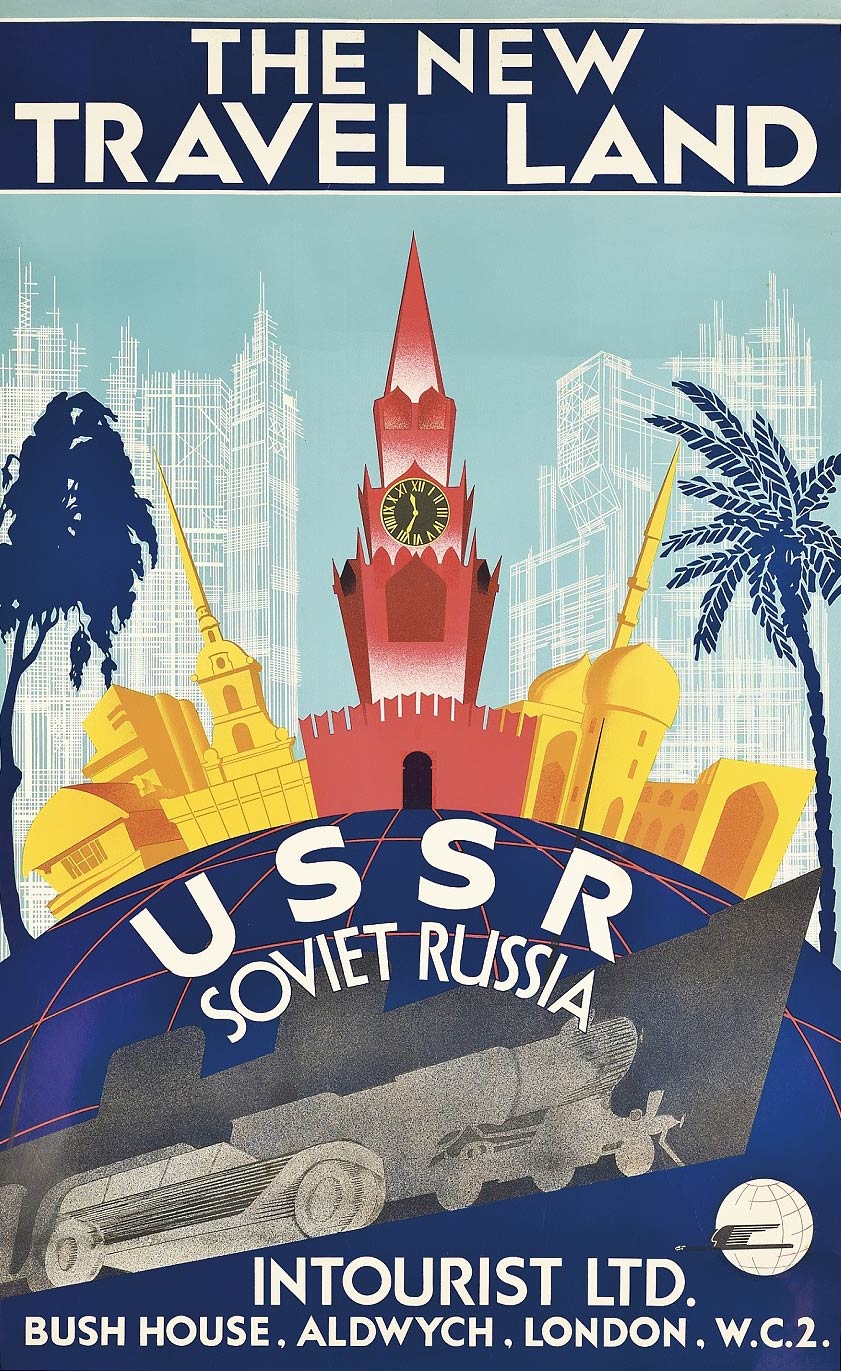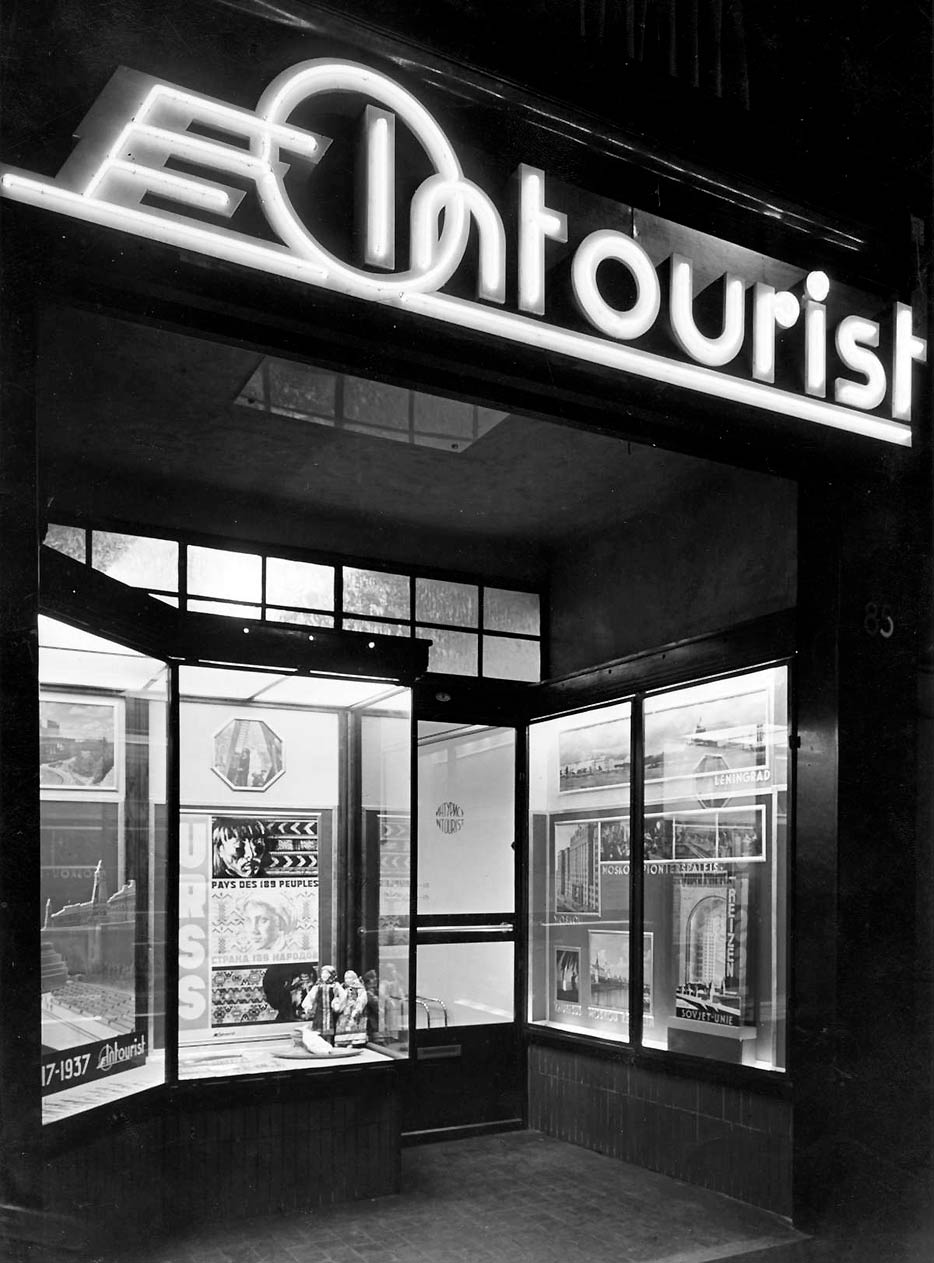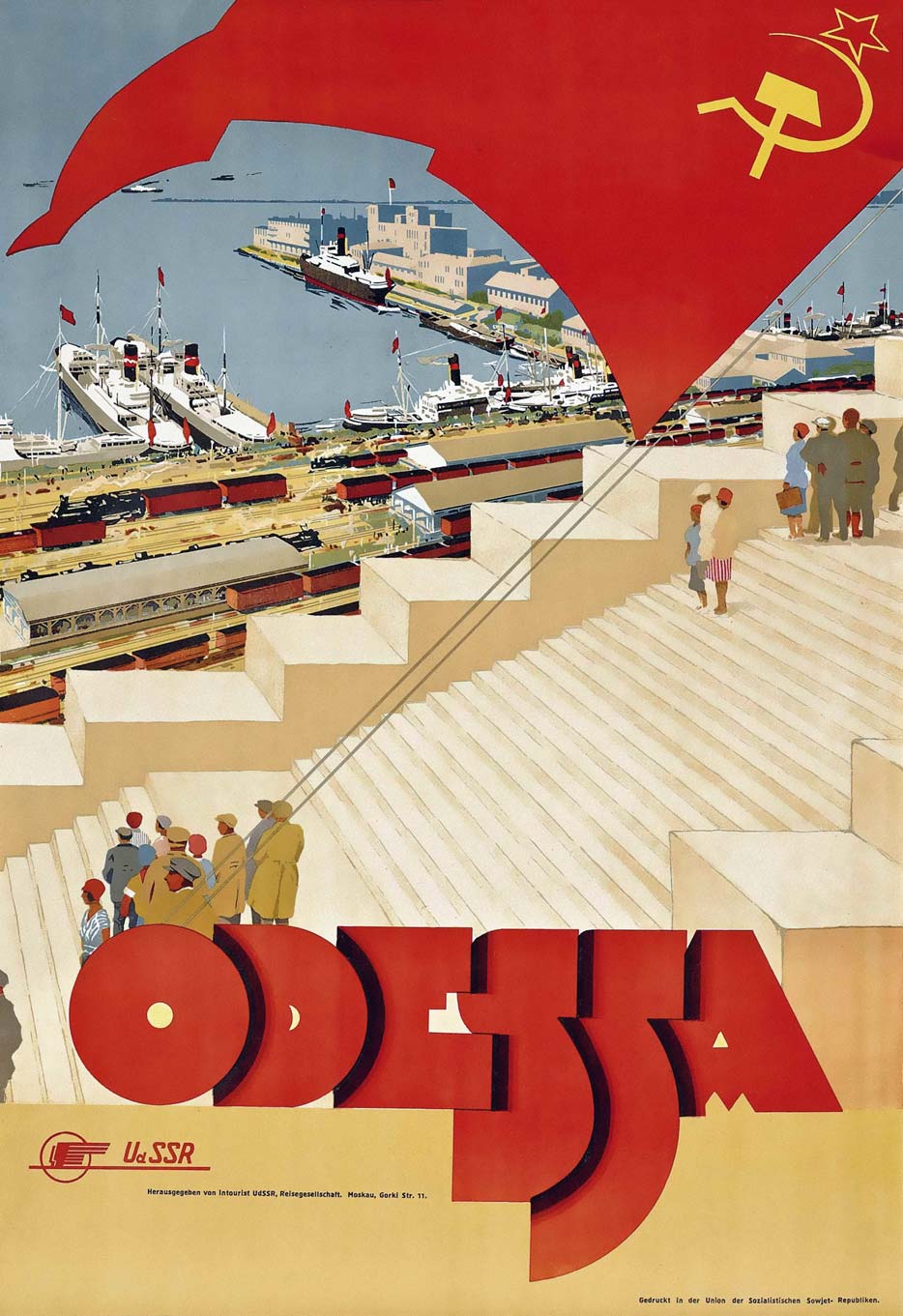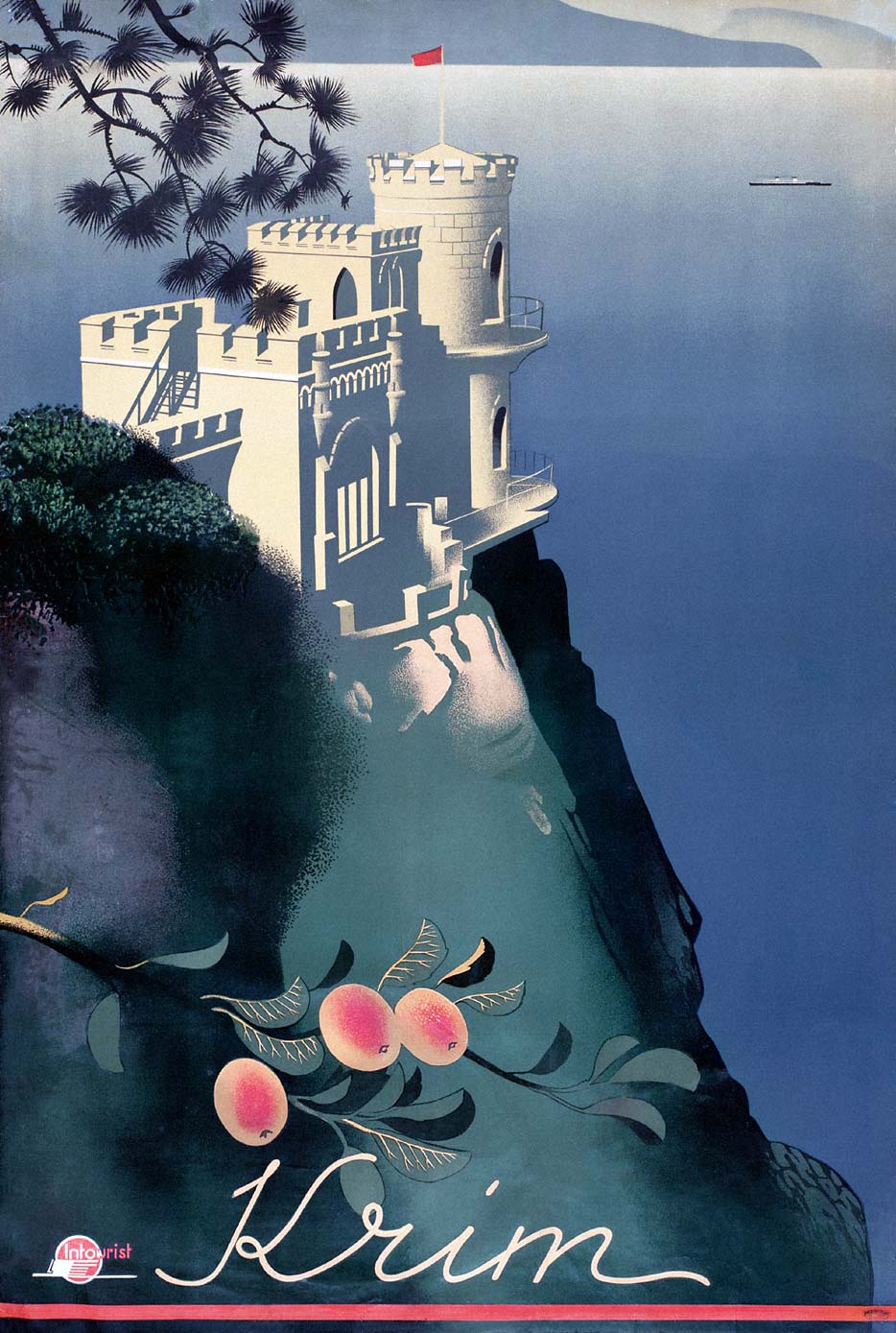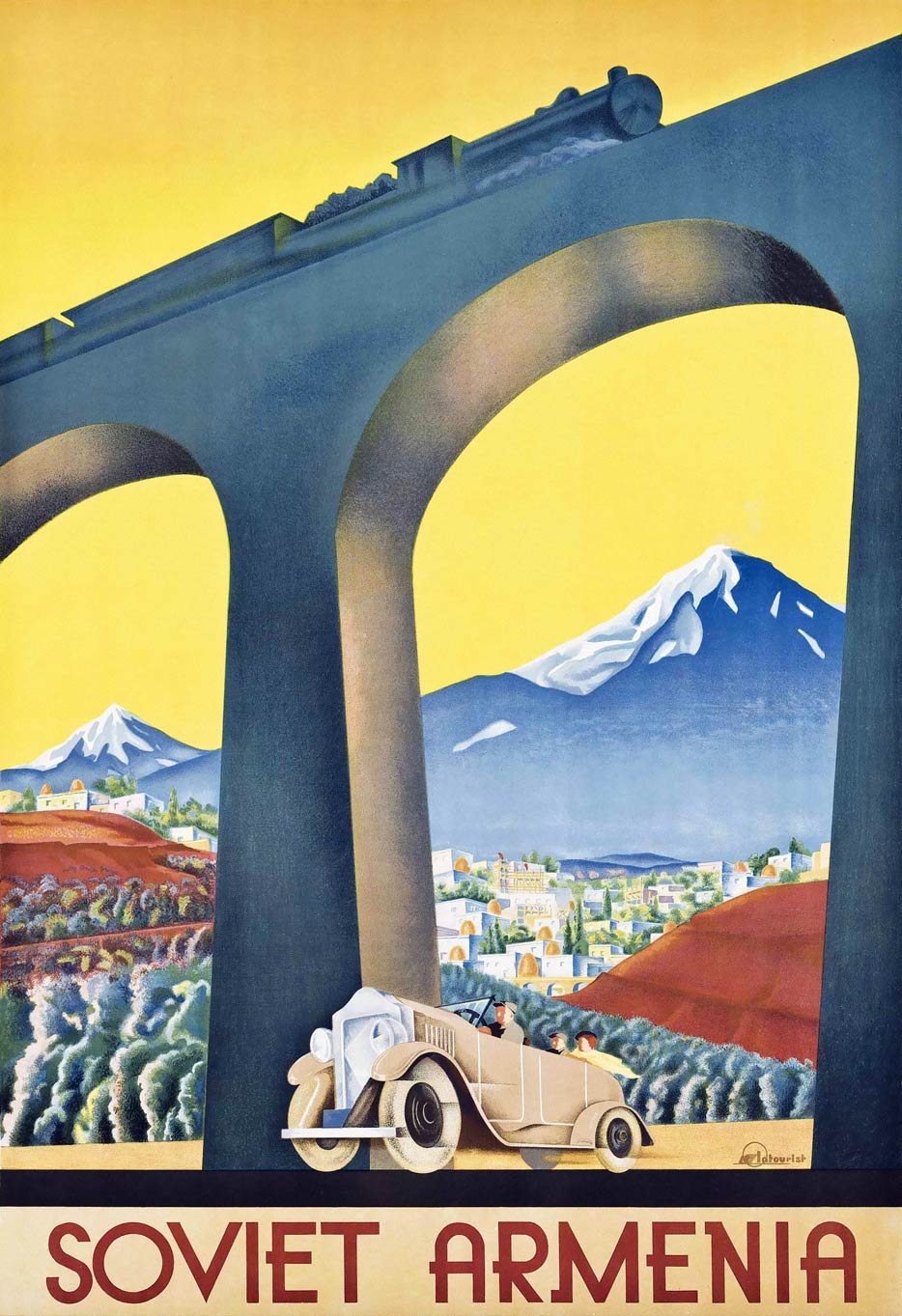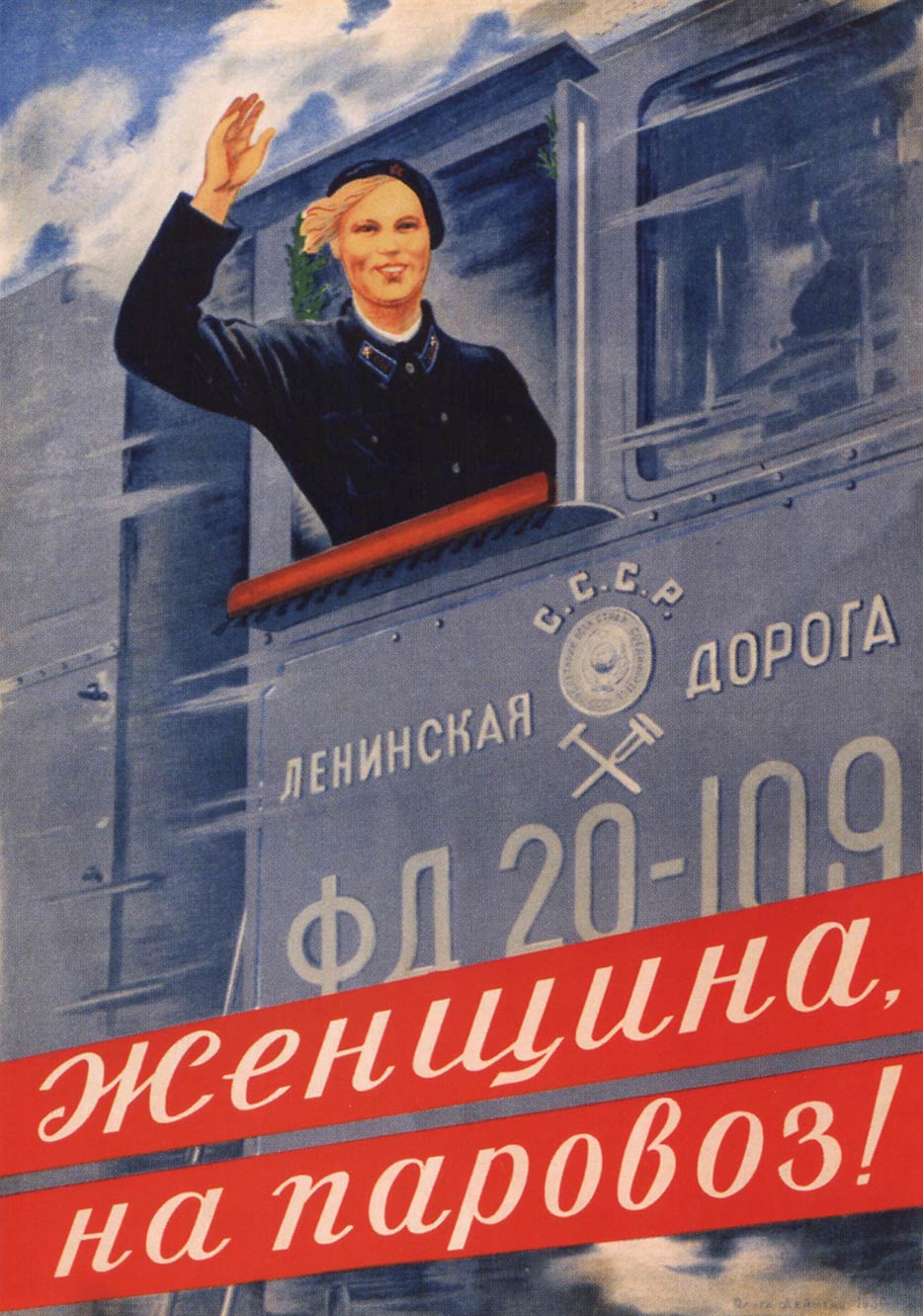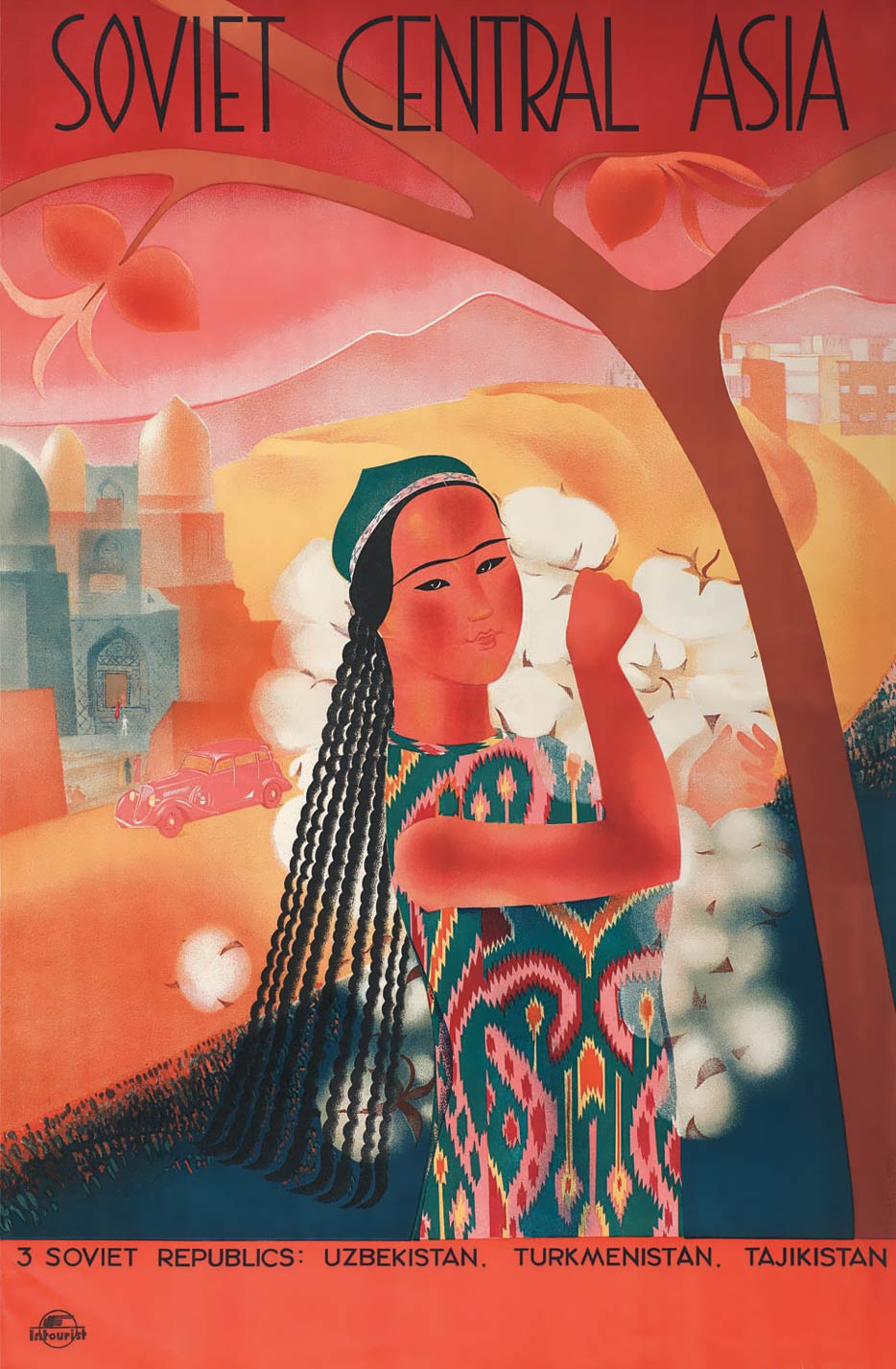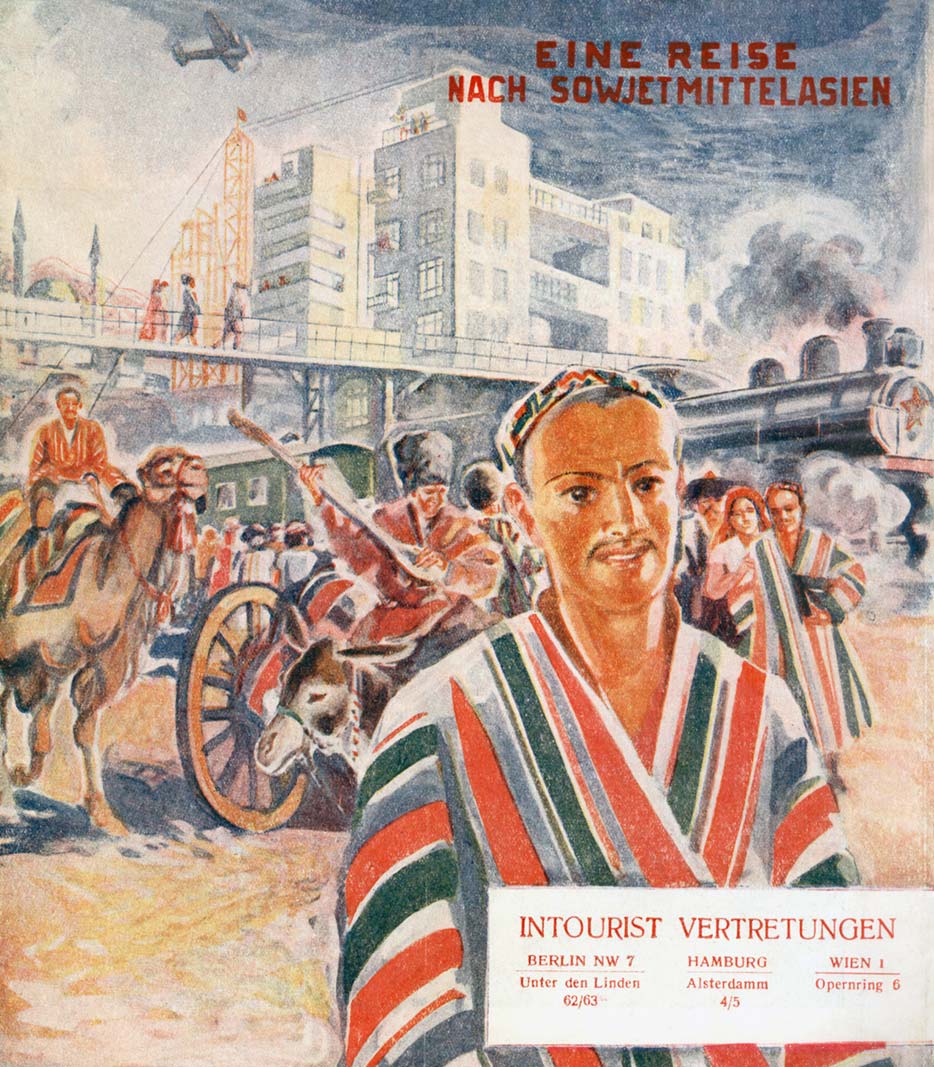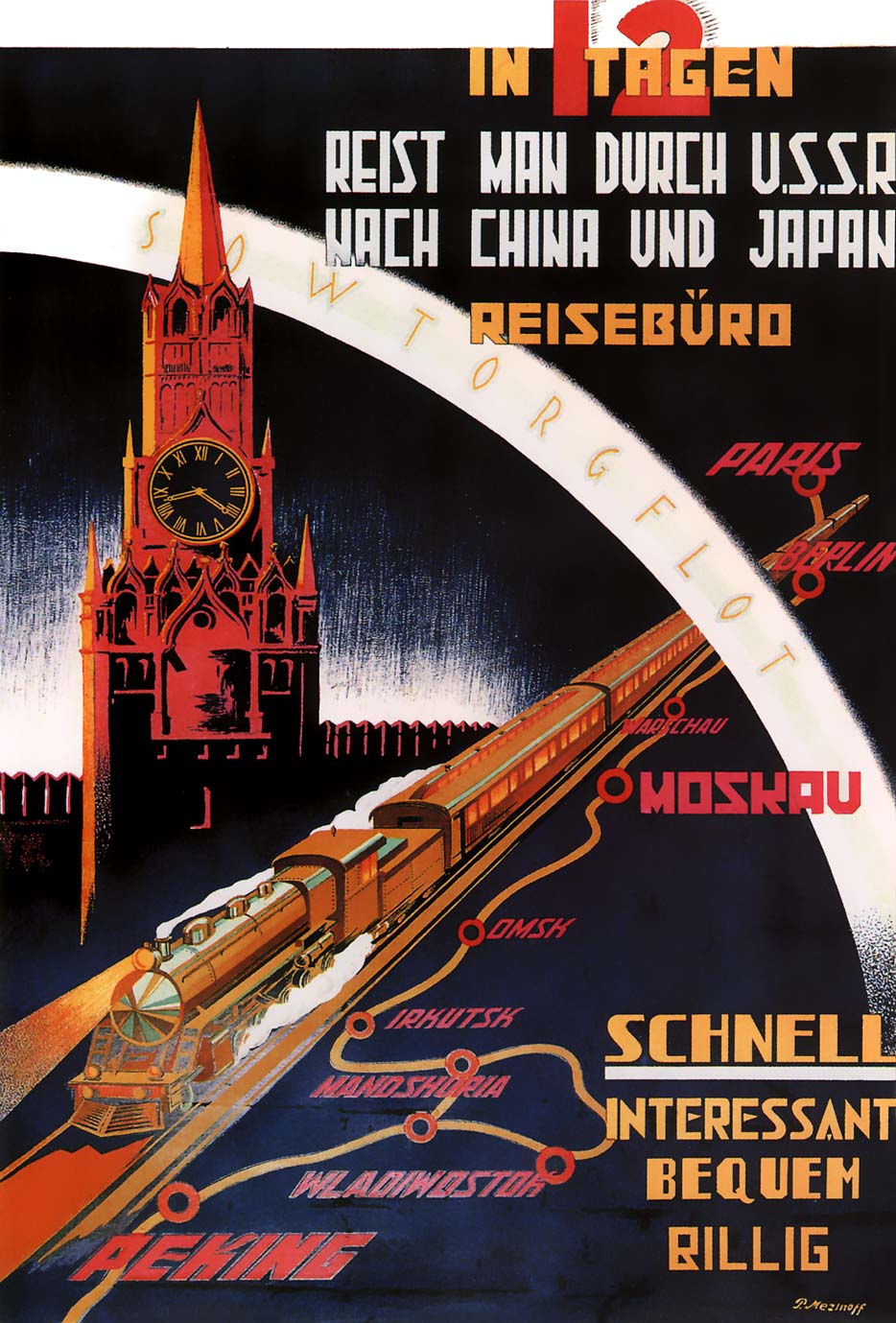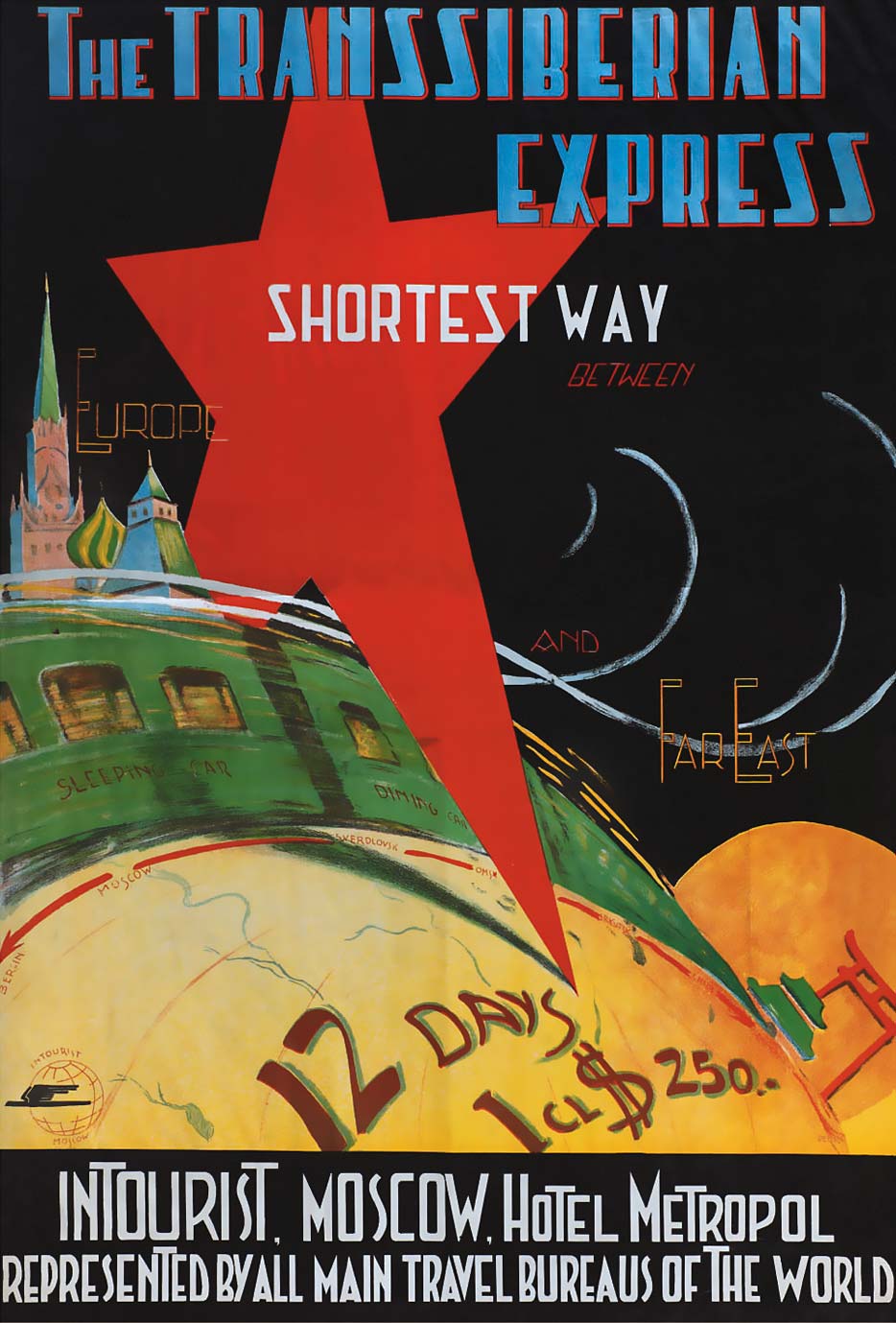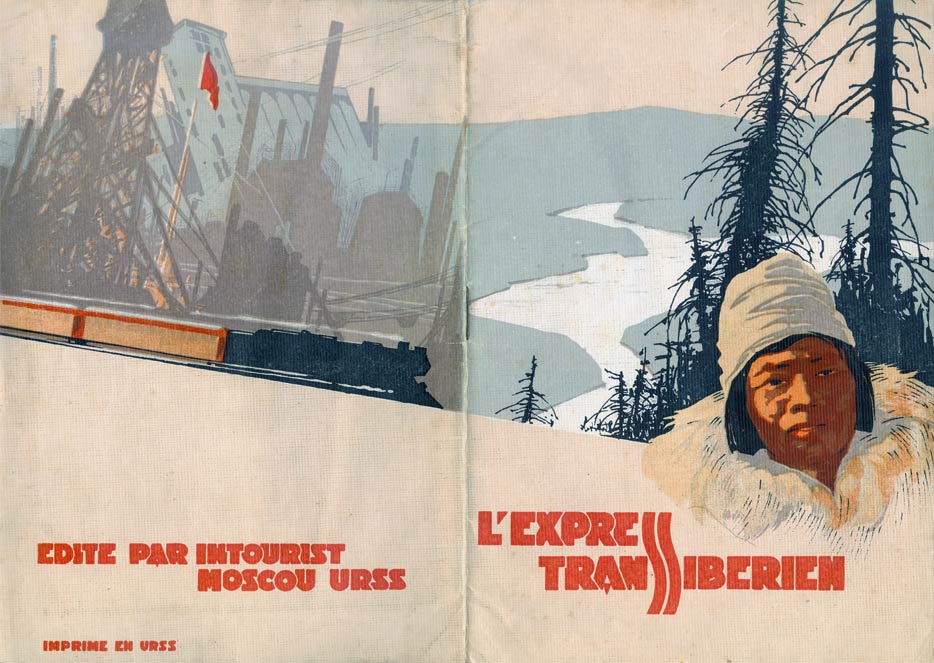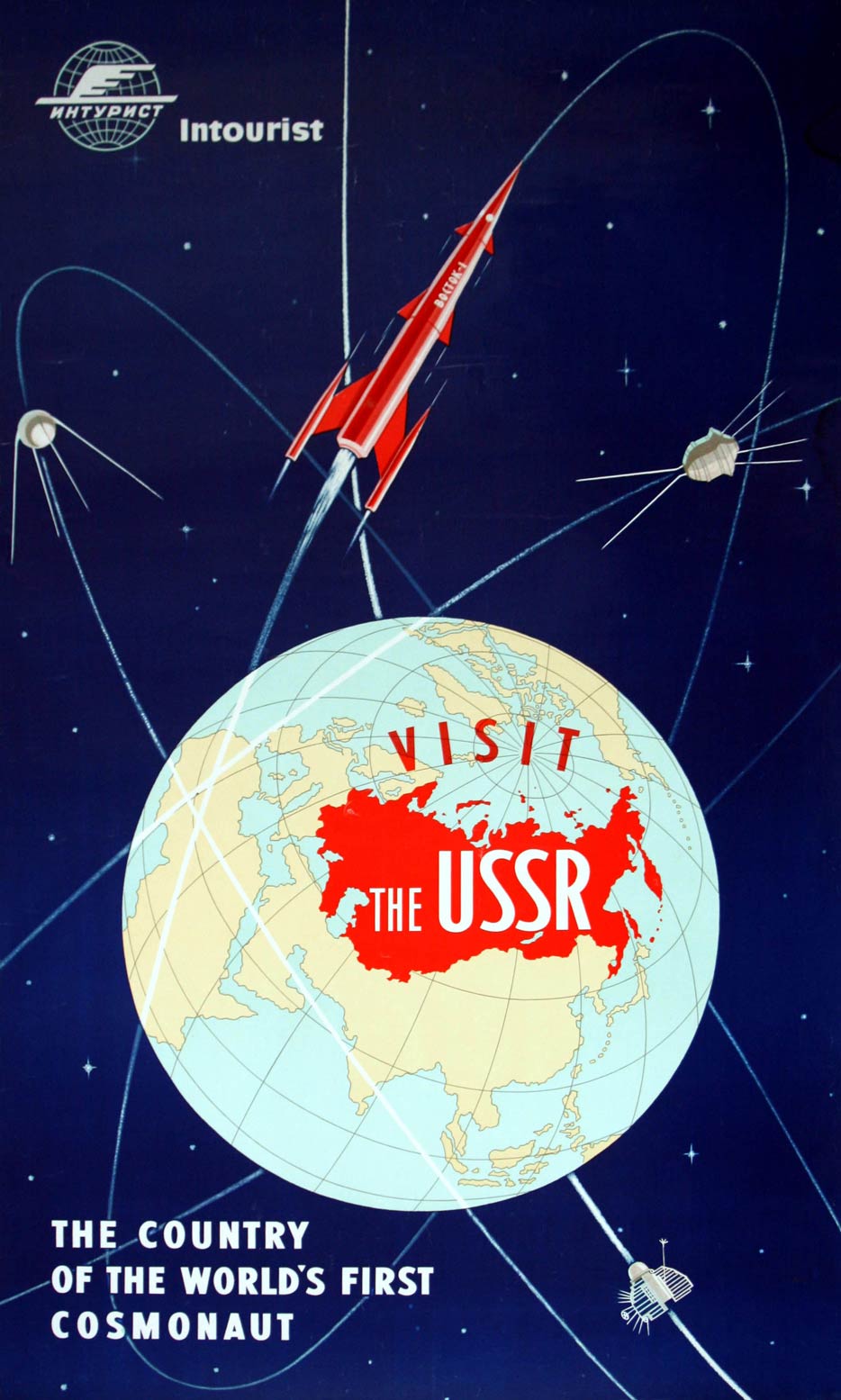The New Travel Land
Intourist posters from the Soviet era
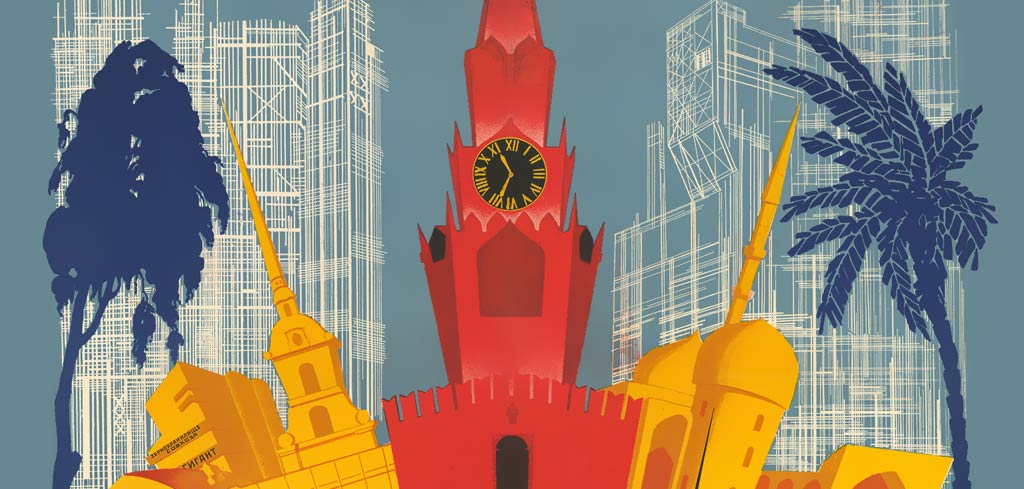 Nederlandse versie
Nederlandse versie
Around 1930 the Soviet Union wanted to attract foreign tourists to bring in currency and improve its external image. The economic crisis aroused Western interest in the communist experiment. On Stalin's and the Party's initiative a national tourist agency was founded. Intourist was responsible for attracting, accommodating and escorting all foreign guests.
Western advertising styles were applied to appeal to the target audience. Intourist posters pictured a tourist paradise, not a country of laborers and peasants. Trains were no icons of progress but a comfortable way of transport. Intourist women were not working hard in a factory but were either fashionable or exotic.
Intourist
Intourist was founded in 1929 by the People's Commissariat of Commerce, the People's Commissariat of Railways and the Sovtorgflot merchant fleet. Its name was a contraction of inostrannyj turist (foreign tourists). The organization had a factual monopoly on inbound tourism. Until World War II Intourist accommodated one million foreign guests.
Originally its goal was purely commercial, but soon Intourist was performing 'cultural diplomacy' by organizing music and theater festivals in Moscow and Leningrad, for example. In addition to transportation and hotels Intourist arranged for guides and interpreters: "Well-informed young people of a very different character from the typical commercial guides found in the European countries". They surrounded the guests with luxury and kept them away from anything that contradicted the image of peace and prosperity.
The first of 30 international offices was opened in London, soon followed by New York, Berlin and Amsterdam. In Moscow the travel agency was located next to the Hotel Metropol. The author E.E. Cummings thought the office looked like a crematorium, but he found the hotel splendid and luxurious.
Intourist advertising was organized by the All-Union Chamber of Commerce under the artistic direction of painter Aleksey Kravchenko. Competitions were held for poster designs, which were won by Sergey Sakharov, Nikolay Zhukov and others.
Because the Soviet propaganda style was not suitable for export, designers studied Western examples, including posters by Cassandre. For internal use such influences were not accepted, but Intourist was allowed to use them to lure tourists. In addition to posters and brochures the magazine Soviet Travel was published and ads appeared in American magazines.
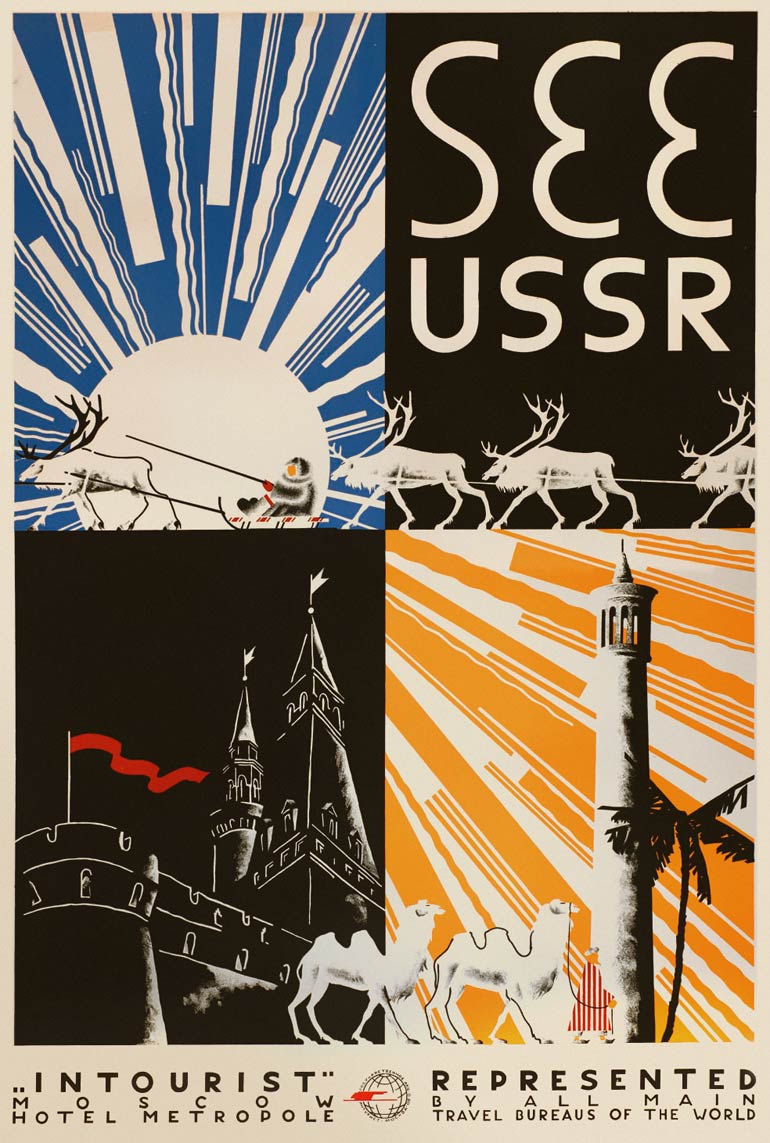

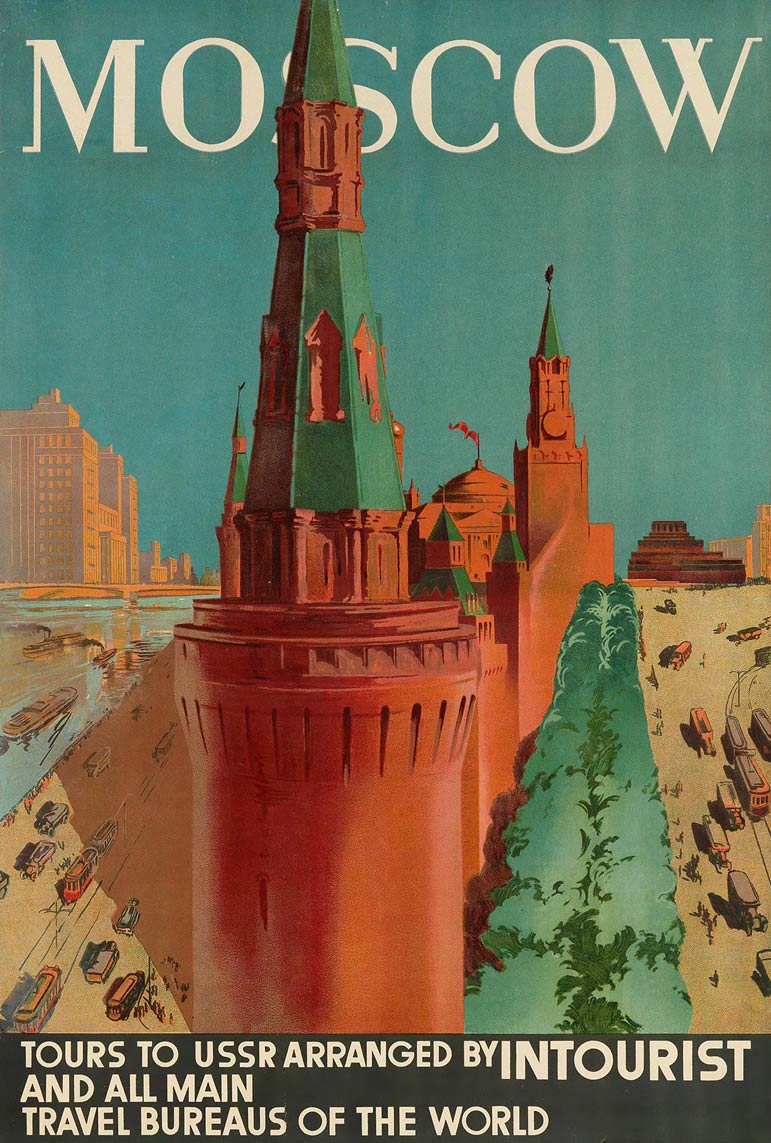
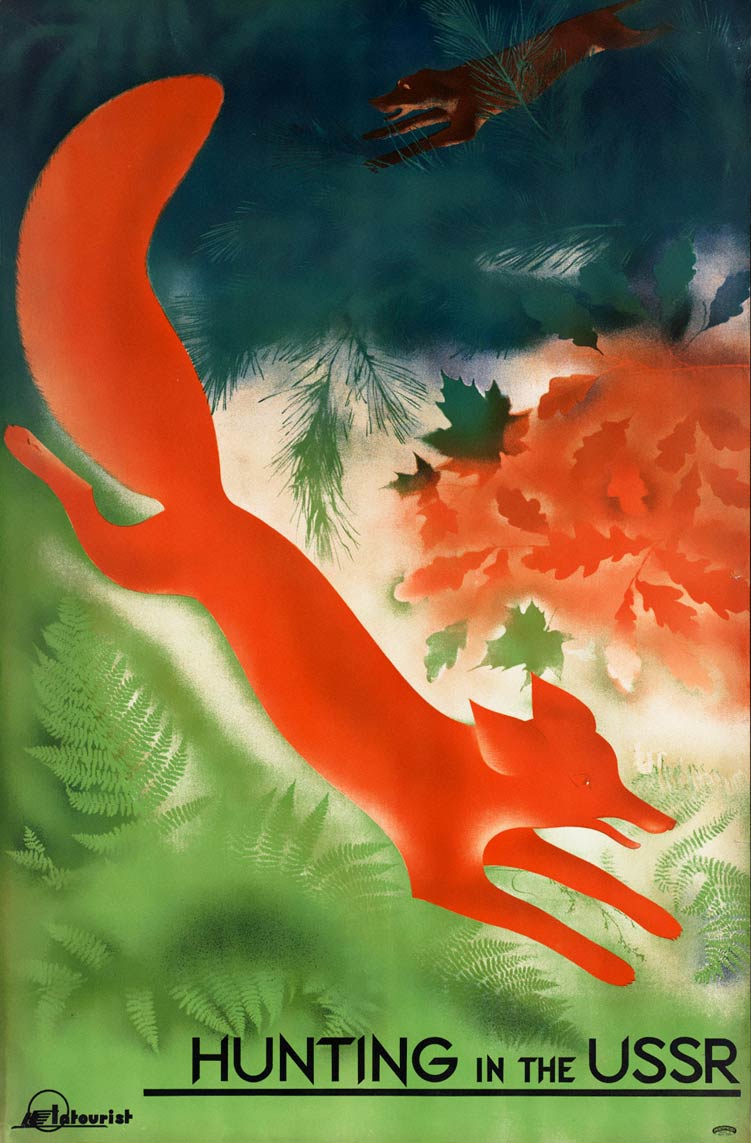
How can a Europe trip be complete without a visit to its largest country? Moscow, Leningrad and other great centers of the U.S.S.R. are easily reached by convenient air, train and boat connections. A great travel organization with many years experience maintains hotels and restaurants in all important centers, operates its own fleets of cars and is staffed by trained attendants and guide-interpreters.
Take time out to see for yourself the results of two decades which have witnessed swift and deep-going changes in the economic, social and political life of 170 million people... cruise down the Volga through numerous republics of different nationalities, cross the mighty Caucasus Mountains and cruise the beautiful Black Sea Coast, seeing all the while the evidences of a new culture rising in contrast to the meticulously preserved monuments and folk traditions of old.

Ukraine
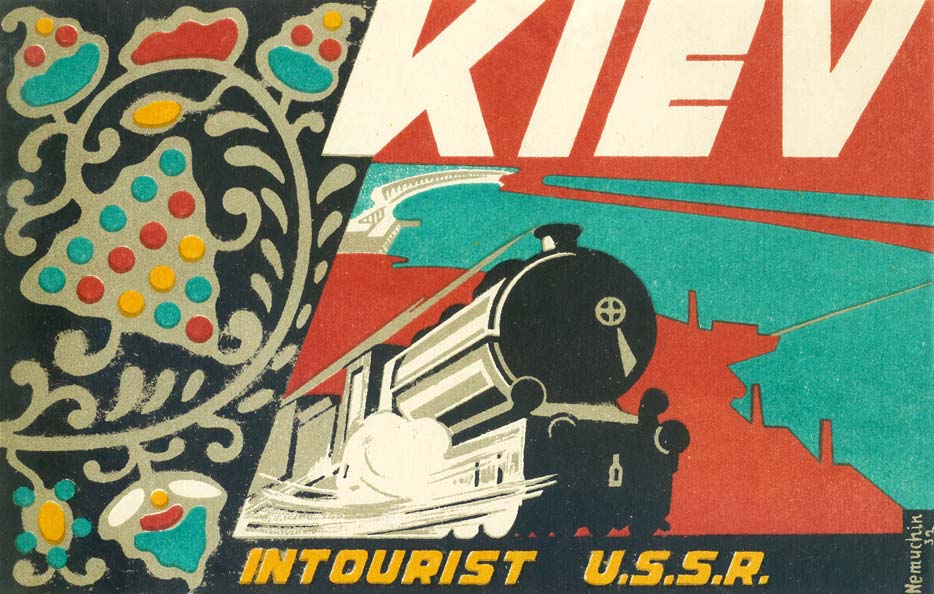
Intourist was eager to show that the Soviet Union was more then just Russia. The 16 Soviet republics counted 189 nations which, according to the propaganda, now all enjoyed equal rights, after being oppressed in tsarist times. Ukraine was the most important of these republics, with the easily accessible cities of Kiev and Odessa. Kiev had been connected with Moscow by rail since 1899.
Tourist brochures emphasized Ukraine's unique character, its rich history and fertile agriculture, while also touting the new capital of Kharkiv and prestigious industrial projects such as the DnieproGes. The promotional texts were in flagrant contradiction with reality. In 1932-33 many millions of Ukrainians died during the Holodomor, a famine caused by Stalin's aggressive agricultural policies.
Come south from Moscow into the Ukraine… where colors are brighter… where sunflowers nod against whitewashed walls and ripping fields of golden grain stretch unbroken, mile after mile… Ancient Kiev awaits you with the historical richness of a thousand years… Catch your breath at the startling contrast of old and new, as sailing down the Dnieper River you come within view of colossal Dnieproges, world's largest hydro-electric station…
Disembark to stroll the busy streets of a shining new city built where only three years ago was barren steppe…
By the time you have circled back to Moscow, you will have a better understanding of what the new order means to non-Russian peoples… for the Ukraine is a colorful country within a country, full of travel enjoyment, new sights, new experiences, for you…
Crimea
In the 1930s Crimea was not yet part of Ukraine, but constituted the Crimean Autonomous Soviet Socialist Republic. Since the 19th century Crimea had been a popular holiday destination for wealthy Russians because of its climate, beaches and fresh air. Russian tourism was facilitated by the Lozova-Simferopol railway from 1875 onwards. In Soviet times the peninsula also boasted spas for workers and a large Young Pioneers camp. Crimea was an attractive destination for foreign tourists as well, especially the 'Black Sea Riviera' around Yalta.
Caucasus
The region between the Black Sea and Caspian Sea, on the border of Europe and Asia, had been conquered by Russia in the 19th century. The Soviets joined Azerbaijan, Georgia and Armenia into the Transcaucasian Socialist Federative Soviet Republic. In 1936 they were split up into three separate Soviet republics.
During the Stalin era Armenia was industrialized over a short period. Armenian nationalism and the Armenian Apostolic Church were violently suppressed with thousands of executions and hundreds of thousands of deportations. Meanwhile tourists were told all was peace and progress.
The poster by Sergey Igumnov (1900-1942) followed European examples of the 1930s with the common motif of a train running on a viaduct. It also depicts an automobile; The two modes of transport complemented each other in Intourist's travel arrangements. The guides doubled as drivers.
Women
The poster by Nicolay Zhukov and Avenir Chernomordik showed a Western lady in an open train window with oil rigs in the background. Intourist portrayed women differently than domestic Soviet propaganda. Instead of standing straight on tractors or locomotives, 'shoulder to shoulder with men', Intourist women were fashionable (Western tourists) or exotic (locals).
Women of the East. Once this meant inequality and complete slavery. Women of the East never appeared among people, never participated in social life. They were illiterate, and they would die rather than expose their face to the outside world.
The October Revolution swept away the chains of the eastern woman. She now stands equal, in every sense, to man.
Middle Asia
The Soviet republics of Uzbekistan, Turkmenistan and Tajikistan originated from Russian Turkestan, a tribal region of Central Asia which was submitted by the Tsar in the 19th century. The barren steppes were partially transformed to cotton farms, also apparent on the Intourist poster.
The Transcaspien or Trans-Caspian Railway was constructed by the Russians in the late 19th century for military purposes and cotton exports. The line follows the western route of the ancient Silk Road from the Caspian Sea to the Uzbek capital of Tashkent. Later on the region became also accessible by rail from Moscow via the southern Urals.
On the cover of an Intourist brochure for Soviet Middle Asia, minarets, camels and donkey carts were depicted together with modern high-rise, locomotives and airplanes.
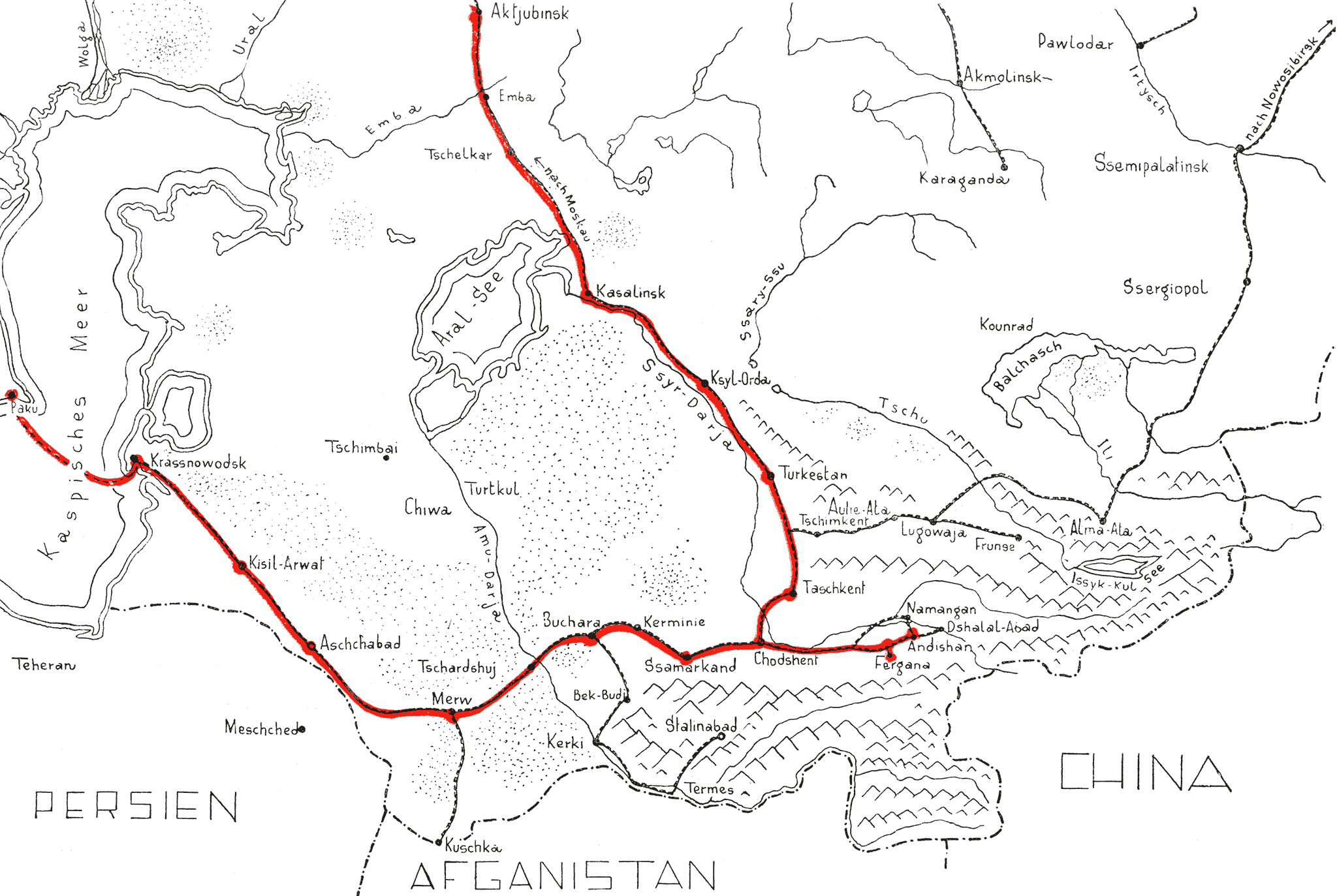
Trans-Siberian Express
In 1930 Intourist rehabilitated the Trans-Siberian Express for foreign tourists. The revolution of 1917 had ended this legendary luxury train, but the Trans-Siberian railway remained in use for 'local' travelers. The construction of the world's longest railway had started in 1890, initiated by the Tsar. From 1901 onwards Wagons-Lits had operated the deluxe Trans-Siberian Express for Western travelers to Asia.
Sleeping and dining cars, confiscated from Wagons-Lits in 1917, were used for the new Trans-Siberian Express in the 1930s — modernized with radio and bath. The luxury train ran once a week, while a daily train with reasonably good accommodation was also open to foreigners. The service was the shortest link between Europe and the Far East: 10 days to Vladivostok, 12 days to China or Japan.
With the completion of the railway line around Lake Baikal in 1905 and the Amur Railway in 1916, a continuous route to Vladivostok was realized, entirely across Russian territory.
The posters by P. Merino still showed some influence of constructivism. They radiated energy and enthusiasm, but had a rather dark color scheme.
Not only is the Trans-Siberian route the shortest, most inexpensive and comfortable means of travelling between Europe and Japan and China in the Far East, but the journey also holds a unique interest for the tourist. For ten thousand kilometers the Trans-Siberian express traverses the territory of the Soviet Union. Leaving the metropolitan centers of Leningrad and Moscow, it speeds through Central Russia, crosses the Volga River, and plunges into the forest regions of the great Siberian taiga, from which it emerges into the beauty surrounding Lake Baikal, the wonder of whose water and mountain scenery has been sung by poets.
The scenic interest of the journey is heightened by the mighty panorama of socialist construction being carried on across the breadth of this vast country. From the car window can be seen giant industrial plants and socialist cities created as a result of the First Five-Year Plan. In the rural districts the train passes collective farms (kolkhozes) and enormous state farms (sovkhozes) on which all the processes of agriculture have been mechanized. The traveller has the opportunity to observe the lives and customs and the new culture of the innumerable peoples freed by the October Revolution from centuries of oppression.
Cold War

World War II brought international tourism to a standstill and it was a long time before it picked up again; in 1955 Intourist's task was significantly expanded with transit traffic and domestic tourism. The company was now allowed to engage in international partnerships. Despite the Cold War the number of foreign tourists multiplied: prosperity increased while travel became cheaper. In 1964 over a million foreigners visited the Soviet Union.
The options for Soviet citizens to visit friendly countries were expanded in the 1960s. Intourist started arranging trips abroad for Soviet population too. In 1975 the number of foreign visitors reached a record hight of over 3 million. After the end of the Soviet Union in 1991 Intourist became a purely commercial company and lost its propaganda function. In 2011 the former state-owned organization became part of the Thomas Cook Group.
